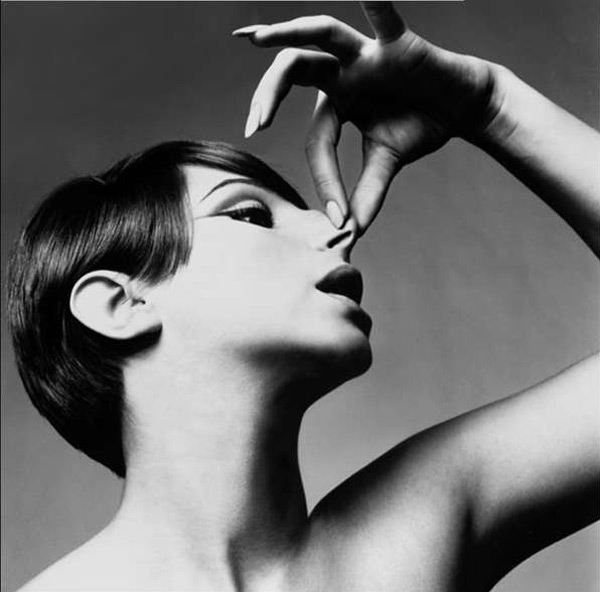
In the middle of September 1952, Charlie Chaplin came to Richard Avedon’s photo studio. Avedon, then 29, had been chasing him for years, but Chaplin never answered his letters. And then the phone rang. Avedon thought it was a joke and hung up, but Chaplin called back and said he was coming right over. Avedon sent his assistants out of the studio so that there would be no distractions.
At first, Avedon shot a few pictures straight on, “almost as though I was doing a passport picture.” When Avedon thought he had his shot, Chaplin asked, “Now, I could do something for you.” He lowered his head, and came up grinning in extreme closeup, with his fingers forming horns on the side of his head—the great god Pan. […]
It seems that Avedon had a Hi-how-are-you friendship with the man who ran the shoeshine stand in the building that housed Avedon’s studio. One day he asked what Avedon did for a living, and Avedon told him he was a photographer. A year or so later, the shoeshine man told Avedon his daughter was getting married. “I will let you be the photographer,” he told Avedon, undoubtedly thinking he was doing him a favor.
Avedon took his Rolleiflex to Long Island and shot the wedding.
{ Wall Street Journal | Continue reading }
related { Texas Wedding Photographers Have Seen Some $#!+ }
photo { Richard Avedon, Chalrie Chaplin, 1952 }
avedon | December 19th, 2020 2:11 pm

Crime statistics are notoriously opaque and faulty. Data are often manipulated for political reasons. Even the city points out the discrepancy can be explained by a change in how shootings are measured. The disconnect between shooting and murder may come down to measurement, or it could reveal something much worse: New Yorkers are getting better at murder.
According to Columbia economics professor Dan O’Flaherty, the odds of someone firing a gun and actually hitting another person is pretty low. And even if you do hit your target, there’s only a 25% chance she’ll die. Four things can increase the odds of shooting and killing someone:
1. Lots of training and practice to make you a better shot
2. Standing closer to the intended victim
3. Using a higher caliber weapon, which increases the likelihood of doing damage when you hit someone
4. Using a weapon that fires more bullets at once
A change in any of these factors could produce more gun-shot murders and fewer shots fired. It’s precisely what happened in Newark between 2000 and 2006 when gun shot murders were up (unlike the rest of the country) and shots fired went down. […] They looked at crime and autopsies and concluded that all four factors played a role. Gang members used higher caliber and more semi-automatic weapons, they were better shots, and killed more people at close range. They attribute these changes to lax law enforcement and prison reorganization, which led to more networking among gangs and escalated gang violence. […]
O’Flaherty says it’s too soon to tell if that’s what’s happening in New York right now. When the odds of killing anyone are so small to begin with, this past year could just be a statistical anomaly.
{ Quartz | Continue reading }
photo { Richard Avedon, B. J. Van Fleet, nine year old, Ennis, Montana, July 2, 1982 }
avedon, guns, new york | January 12th, 2016 1:52 pm
avedon, visual design | January 2nd, 2013 5:24 pm
avedon | August 19th, 2012 1:18 pm

As you know, the latest generation with a formal name is “The Millennials,” and they are basically the worst, continuing the grand tradition of every new generation being the worst.
{ Hamilton Nolan/Gawker | Continue reading }
photo { Richard Avedon | Murals and Portraits at Gagosian, until July 6, 2012 }
avedon, kids | May 4th, 2012 4:39 pm

In the financial markets, a lot rides on the word of a company’s top executives. If a CEO tells a lie, a lot of shareholders can get hurt.
Now, after studying thousands of corporate earnings calls, two researchers from Stanford University think they’ve come up with a way to tell when senior executives are fibbing.
It’s a question that people have been wrestling with for as long as humans have been interacting with each other.
“I think since the Garden of Eden we’ve been trying to figure this out — who’s lying and who’s not lying,” says David Larcker, a professor of accounting at Stanford’s Graduate School of Business. (…)
Kumar was asked, “Can your books be trusted?” And he replied by saying, “We hire the very best auditors.” Larcker says that can be a big warning sign.
“You basically are not answering the question. You’re basically making reference to somebody else, and those are the kinds of things in psychology you look for,” he says. (…)
Zakolyukina says lying executives tend to overuse words like “we” and “our team” when they talk about their company. They avoid saying “I.” (…) Lying CEOs also tend to use a lot of words that express positive emotion — things are fabulous and fantastic and extraordinary.
{ NPR | Continue reading }
related { Twitter Mood Predicts The Stock Market }
photo { Richard Avedon }
avedon, economics, psychology, shit talkers | October 20th, 2010 7:35 am
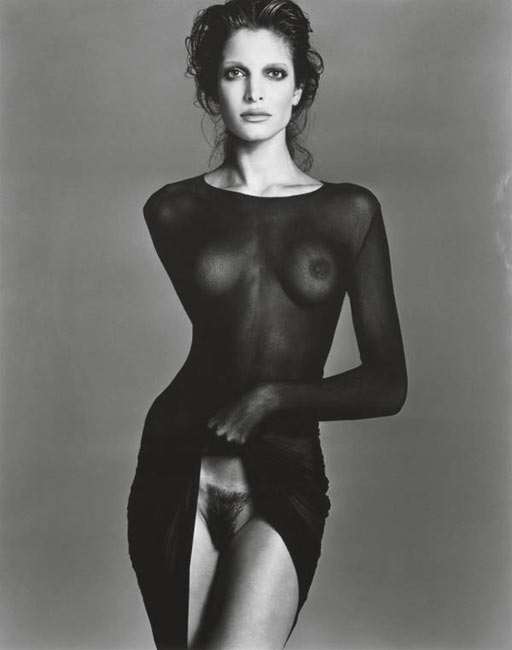
{ Richard Avedon, Stephanie Seymour, Model, New York City, 1992 | gelatin silver print, signed, numbered ‘5/5′ in pencil, copyright credit and reproduction title stamps (on the verso) 57¾ x 46in. (146.6 x 116.8cm.) | $182,500 | The stylist for this shoot was Polly Allen Mellon, the dress is by Comme des Garçons, Ms. Seymour’s hair is styled by Oribe, her make-up is by Kevin Aucoin. | Christie’s }
art, avedon, economics, fashion | October 13th, 2010 8:46 am

White men with brown eyes are perceived to be more dominant than their blue-eyed counterparts. However, a blue-eyed man looking to make himself appear more dominant would be wasting his time investing in brown-coloured contact lenses. A new study by Karel Kleisner and colleagues at Charles University in the Czech Republic has found that brown iris colour seems to co-occur with some other aspect of facial appearance that triggers in others the perception of dominance.
Sixty-two student participants, half of them female, rated the dominance and/or attractiveness of the photographed faces of forty men and forty women. All models were Caucasian, and all of them were holding a neutral expression. Men with brown eyes were rated consistently as more dominant than blue-eyed men. No such effect of eye-colour was found for the photos of women. Eye colour also bore no association to the attractiveness ratings.
Next the researchers used Photoshop to give the brown-eyed men blue eyes and the blue-eyed men brown eyes. The photos were then rated by a new batch of participants. The intriguing finding here was that the dominance ratings were left largely unaffected by the eye colour manipulation. The men who really had brown eyes, but thanks to Photoshop appeared with blue eyes, still tended to be rated as more dominant.
{ BPS | Continue reading }
photo { Richard Avedon, Billy Mudd, Trucker, Alto, Texas, May 7, 1981 }
avedon, eyes, psychology, relationships | June 11th, 2010 8:39 am
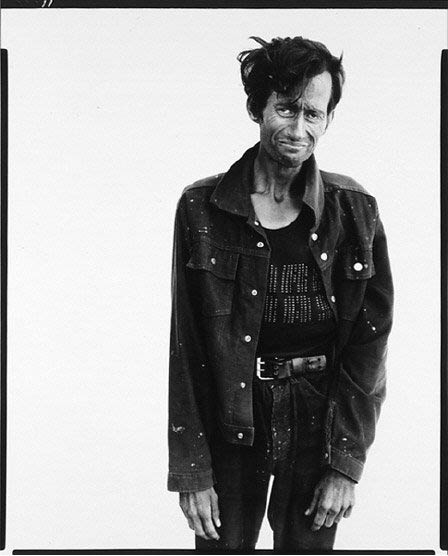
{ Richard Avedon, Richard Garber, drifter, Interstate 15, Provo, Utah, 1980 }
avedon | June 8th, 2010 7:42 pm
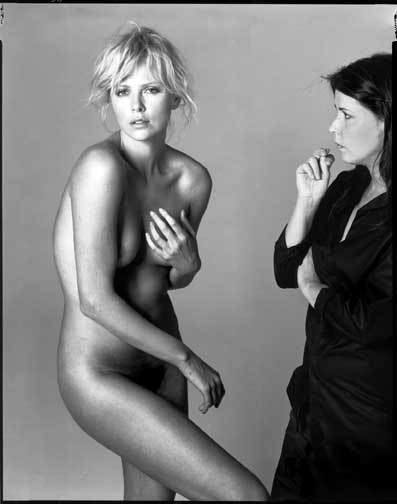
A double bind is a dilemma in communication in which an individual (or group) receives two or more conflicting messages, with one message negating the other. This creates a situation in which a successful response to one message results in a failed response to the other, so that the person will be automatically wrong regardless of response. The nature of a double bind is that the person cannot confront the inherent dilemma, and therefore can neither comment on the conflict, nor resolve it, nor opt out of the situation.
A double bind generally includes different levels of abstraction in orders of messages, and these messages can be stated or implicit within the context of the situation, or conveyed by tone of voice or body language. Further complications arise when frequent double binds are part of an ongoing relationship to which the person or group is committed.
Double bind theory is more clearly understood in the context of complex systems and cybernetics because human communication and also the mind itself function in an interactive manner similar to ecosystems. Complex systems theory helps us understand the interdependence of the parts of a message and provides “an ordering of what to the Newtonian looks like chaos.”
{ Wikipedia | Continue reading }
photo { Charlize Theron and Patty Jenkins photographed by Richard Avedon, 2004 | more }
avedon, ideas, relationships, theory | June 3rd, 2010 8:20 am
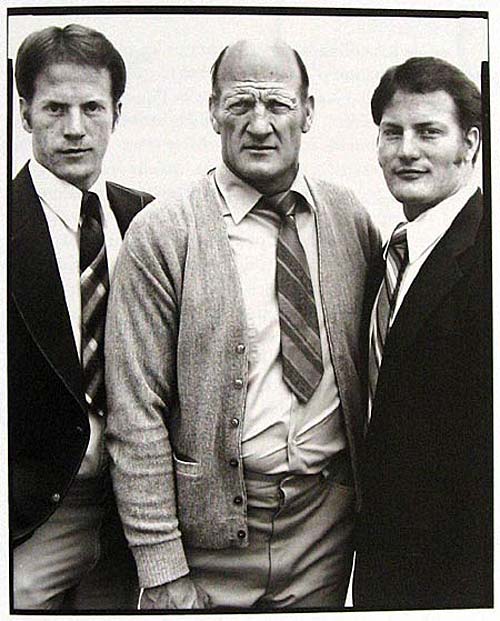
{ Richard Avedon, Lyal Burr, coal miner, and his sons Kerry and Phillip, The Church of Jesus Christ of Latter-Day Saints, Koosharem, Utah, May 7, 1981 }

{ Avedon’s instructions to his printer. | Scanned from Evidence 1944-1994: Richard Avedon | Amazon | Art Forum book review }
archives, avedon | May 25th, 2010 7:25 am

The way in which the other presents himself, exceeding the idea of the other in me, we here name face. (…) The face brings a notion of truth which is not the disclosure of an impersonal Neuter, but expression: the existent breaks through all the envelopings and generalities of Being to spread out in its “form” the totality of its “content,” finally abolishing the distinction between form and content. (…) to receive from the Other beyond the capicity of the I, which means exactly: to have the idea of infinity.
{ Emmanuel Levinas, Totality and Infinity: An Essay on Exteriority, A.5. Transcendence as the Idea of Infinity, 1969 }
{ Natassja Kinski photographed by Richard Avedon, New York, February, 1982 }
avedon, ideas, roland barthes | May 13th, 2010 8:52 am
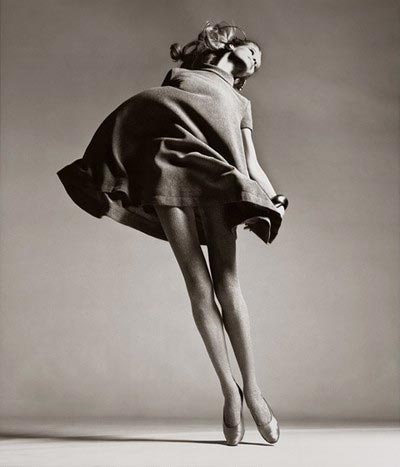
The global economy is poised to enter a new phase of robust, dependable growth. Technological and economic historian Carlota Perez calls it a “golden age.” Such ages occur roughly every 60 years, and they last for a decade or more, part of a long cycle of technological change and financial activity.
This doesn’t mean that the world’s political and economic problems will go away. But whereas the details of long cycles vary, the overall pattern of progress remains the same: An economy spends 30 years in what Perez calls “installation,” using financial capital (largely from investors) to put in place new technologies. Ultimately, overinvestment and excessive speculation lead to a financial crisis, after which installation gives way to “deployment”: a time of gradually increasing prosperity and income from improved goods and services.
{ Policy Innovations | Continue reading }
I maintain that in the present environment there is no such thing as a return to self-sustaining growth. There will be no return to the supposedly normal conditions, which were in fact, from a historical point of view, highly abnormal, of the 1990s and 2000s.
What one needs is to set a strategic direction for renewal of economic activity. We need to create the institutions that will support that direction.
{ Interview with James K. Galbraith | MM News | Continue reading }
Financial bubbles are a way of life now. They can upend your industry, send your portfolio into spasms and leave you with whiplash. And then, once you’ve recovered, the next one will hit.
Or so you might think, as a veteran of two gut-wrenching market declines and a housing bubble over the last decade.
There’s plenty of reason to expect more surprises, given the number of hedge funds moving large amounts of money quickly around the world and the big banks making their own trades. (…)
If you want to better insulate yourself from bubbles — however often they may inflate — there are plenty of things you can do.
{ NY Times | Continue reading }
photo { Richard Avedon, Veruschka, dress by Bill Blass, New York, January 1967 }
related { Employment for adult males is at record lows | charts }
previously { A ‘doomsday cycle’ has infiltrated the economic system and could lead to disaster after the next financial crisis. }
avedon, economics, guide | March 4th, 2010 8:14 am




